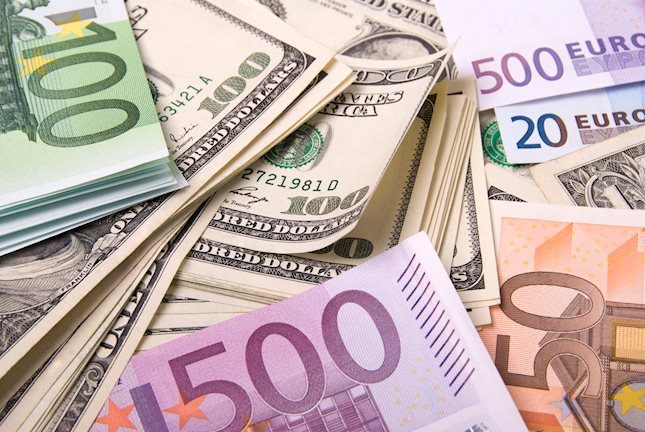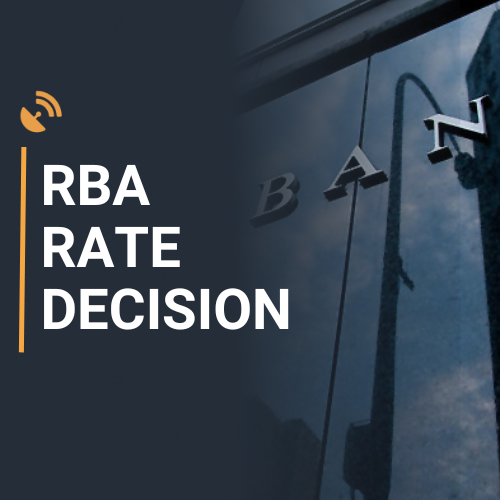- Gold price holds gains tightly as Fed policymakers support an unchanged monetary policy ahead.
- The US Dollar reported bearish closes six times in a row as hawkish Fed bets wane.
- US CPI data came in broadly in line with market expectations.
Gold price (XAU/USD) faces some selling pressure as the Inflation report for September remained majorly in line with estimates. The monthly core Consumer Price Index (CPI) that excludes volatile oil and food prices expanded by 0.3% and the annual data decelerated to 4.1% as expected by the market participants. The headline inflation remained higher than expectations as a rally in global oil prices spurted prices of gasoline and food products. The headline CPI grew at a higher pace of 0.4% on month, while investors forecasted a pace of 0.3%. The annual headline CPI grew at a steady remained steady pace of 3.7%, marginally higher than expectations of 3.6%.
The US Dollar Index (DXY) rebounds swiftly as investors expect that no progress to ease in inflationary pressures could allow the Federal reserve (Fed) to raise interest rates further in November.
While the majority of Fed policymakers favored an additional interest rate hike ahead as per FOMC minutes, rising long-term Treasury yields have forced them to support keeping interest rates steady. Higher bond yields are expected to slow down the pace of spending and investment. At this point in time, when inflation is consistently falling and Middle East tensions are deepening, risks of under-tightening would be lower than the consequences of tightening too much.
Daily Digest Market Movers: Gold price slips as yields rebound
- Gold price faces a sell-off above $1,880 as the core inflation for September remained in line with estimates.
- Monthly core inflation expanded by 0.3% as expected and the annual core CPI dropped to 4.1%. The headline CPI rose more than expected as higher oil prices pushed gasoline rates.
- Rising expectations for the Fed keeping interest rates unchanged at 5.25-5.50% are backed by multi-year highs in long-term US Treasury yields, which are sufficient to squeeze spending and investment ahead.
- The 10-year US Treasury yield corrects from recent highs of 4.7% as the deepening Israel-Hamas conflict has also contributed to the decline in expectations of further policy-tightening.
- While investors see the Fed keeping interest rates steady ahead, policymakers have a different approach to the interest rate outlook.
- Atlanta Fed Bank President Raphael Bostic said on Tuesday that current monetary policy is sufficiently restrictive and inflation will come down to 2% without triggering a recession.
- Fed policymakers: San Francisco Fed Bank President Mary Daly and Dallas Fed Bank President Lorie Logan warned that higher long-term US Treasury yields could substitute the need for further interest rate hikes by making borrowing expensive. Fed’s Daly said that risk of under-tightening would be lower than the risk of raising rates too much.
- Fed Governor Michelle Bowman reiterated on Wednesday that further rate hikes are highly required to restore price stability despite some progress in inflation softening.
- Fed’s Bowman further added that after raising interest rates they should be kept higher for a longer period due to persistent risks of inflation amid robust consumer spending and upbeat labor market conditions.
- The US Dollar Index (DXY) extends its correction to near 105.50 despite a hot producer inflation report, released on Wednesday.
- The US Bureau of Labor Statistics reported that the September monthly headline Producer Price Index (PPI) rose at a higher pace of 0.5% vs. expectations of 0.4% and that core PPI grew by 0.3% against the estimates of 0.2%. On an annualized basis, the prices of core goods and services at factory gates jumped to 2.7%, above the 2.3% consensus.
- A surprisingly hot PPI report has improved the inflation outlook. For more clarity, investors will focus on the Consumer Price Index (CPI) data for September, which will be published at 12:30 GMT.
- As per the estimates, the monthly headline and core inflation are expected to register growth of 0.3%. Rising energy prices due to rallying global oil prices amid tight supply may result in sustained growth ahead. The impact of the rise in headline inflation would be limited to the interest rate plot.
- Annual headline and core inflation are seen declining to 3.6% and 4.1%, respectively. A surprisingly hot inflation report could set a hawkish undertone for the Fed’s monetary policy in November.
- The Federal Open Market Committee (FOMC) minutes for September released on Wednesday conveyed that a majority of policymakers at that meeting were in favor of one additional interest rate hike and keeping them restrictive for a longer period.
Technical Analysis: Gold price drops below $1,880
Gold price jumps to near $1,880.00 on Thursday as hawkish Fed bets swiftly fade away. The precious metal registers a fresh two-week high and is gathering strength for further upside. The yellow metal climbs above the 20-day Exponential Moving Average (EMA) around $1,872.00, which indicates that the short-term trend has turned bullish. The broader Gold price outlook is bearish as the 50 and 200-day EMAs have already delivered a Death Cross.
Fed FAQs
What does the Federal Reserve do, how does it impact the US Dollar?
Monetary policy in the US is shaped by the Federal Reserve (Fed). The Fed has two mandates: to achieve price stability and foster full employment. Its primary tool to achieve these goals is by adjusting interest rates.
When prices are rising too quickly and inflation is above the Fed’s 2% target, it raises interest rates, increasing borrowing costs throughout the economy. This results in a stronger US Dollar (USD) as it makes the US a more attractive place for international investors to park their money.
When inflation falls below 2% or the Unemployment Rate is too high, the Fed may lower interest rates to encourage borrowing, which weighs on the Greenback.
How often does the Fed hold monetary policy meetings?
The Federal Reserve (Fed) holds eight policy meetings a year, where the Federal Open Market Committee (FOMC) assesses economic conditions and makes monetary policy decisions.
The FOMC is attended by twelve Fed officials – the seven members of the Board of Governors, the president of the Federal Reserve Bank of New York, and four of the remaining eleven regional Reserve Bank presidents, who serve one-year terms on a rotating basis.
What is Quantitative Easing (QE) and how does it impact USD?
In extreme situations, the Federal Reserve may resort to a policy named Quantitative Easing (QE). QE is the process by which the Fed substantially increases the flow of credit in a stuck financial system.
It is a non-standard policy measure used during crises or when inflation is extremely low. It was the Fed’s weapon of choice during the Great Financial Crisis in 2008. It involves the Fed printing more Dollars and using them to buy high grade bonds from financial institutions. QE usually weakens the US Dollar.
What is Quantitative Tightening (QT) and how does it impact the US Dollar?
Quantitative tightening (QT) is the reverse process of QE, whereby the Federal Reserve stops buying bonds from financial institutions and does not reinvest the principal from the bonds it holds maturing, to purchase new bonds. It is usually positive for the value of the US Dollar.
Information on these pages contains forward-looking statements that involve risks and uncertainties. Markets and instruments profiled on this page are for informational purposes only and should not in any way come across as a recommendation to buy or sell in these assets. You should do your own thorough research before making any investment decisions. FXStreet does not in any way guarantee that this information is free from mistakes, errors, or material misstatements. It also does not guarantee that this information is of a timely nature. Investing in Open Markets involves a great deal of risk, including the loss of all or a portion of your investment, as well as emotional distress. All risks, losses and costs associated with investing, including total loss of principal, are your responsibility. The views and opinions expressed in this article are those of the authors and do not necessarily reflect the official policy or position of FXStreet nor its advertisers. The author will not be held responsible for information that is found at the end of links posted on this page.
If not otherwise explicitly mentioned in the body of the article, at the time of writing, the author has no position in any stock mentioned in this article and no business relationship with any company mentioned. The author has not received compensation for writing this article, other than from FXStreet.
FXStreet and the author do not provide personalized recommendations. The author makes no representations as to the accuracy, completeness, or suitability of this information. FXStreet and the author will not be liable for any errors, omissions or any losses, injuries or damages arising from this information and its display or use. Errors and omissions excepted.
The author and FXStreet are not registered investment advisors and nothing in this article is intended to be investment advice.
Recommended content
Editors’ Picks

AUD/USD looks at the RBA for near-term direction
AUD/USD resumed its rebound and briefly surpassed the 0.6600 barrier on the back of the renewed and marked resurgence of the downward bias in the US Dollar. Investors, in the meantime, expect the RBA to keep its rates unchanged on Tuesday.

EUR/USD: Price action hinges on the US election and the Fed
EUR/USD managed to trespass the key 1.0900 hurdle and print new highs following the Greenback’s offered stance as investors warmed up for the US election and the FOMC event later in the week.

Gold trades around $2,730
Gold price is on the defensive below $2,750 in European trading on Monday, erasing the early gains. The downside, however, appears elusive amid the US presidential election risks and the ongoing Middle East geopolitical tensions.

RBA widely expected to keep interest rate unchanged amid persisting price pressures
Australia’s benchmark interest rate is set to stay unchanged at 4.35% in November. The focus remains on Reserve Bank of Australia Governor Michele Bullock’s comments and updated economic forecasts. The Australian Dollar could wilt if RBA Governor Bullock ramps up bets for a December rate cut.

US presidential election outcome: What could it mean for the US Dollar? Premium
The US Dollar has regained lost momentum against its six major rivals at the beginning of the final quarter of 2024, as tensions mount ahead of the highly anticipated United States Presidential election due on November 5.

Best Forex Brokers with Low Spreads
VERIFIED Low spreads are crucial for reducing trading costs. Explore top Forex brokers offering competitive spreads and high leverage. Compare options for EUR/USD, GBP/USD, USD/JPY, and Gold.